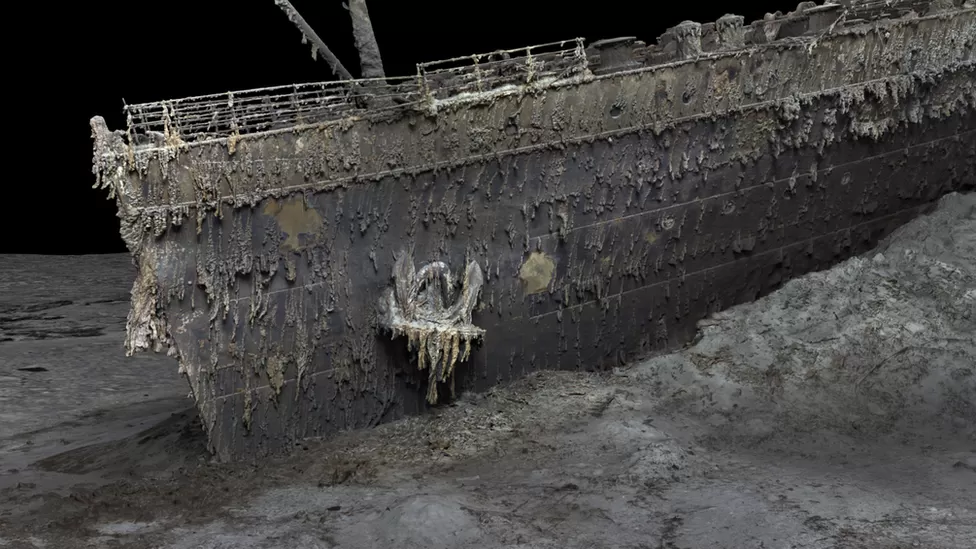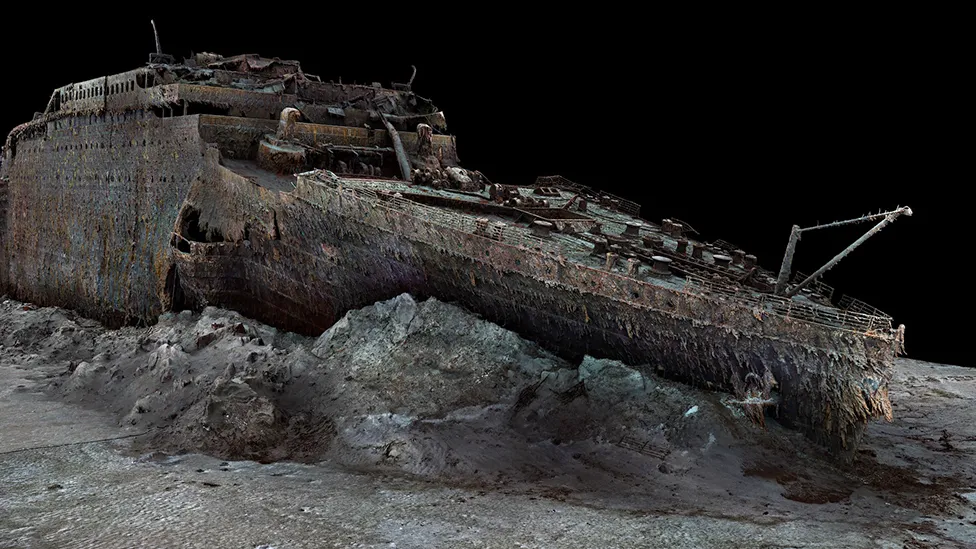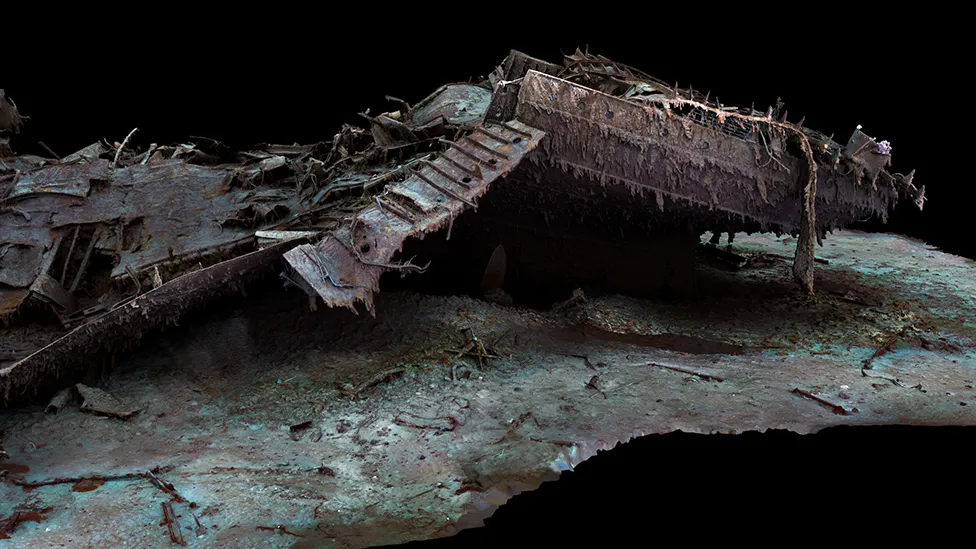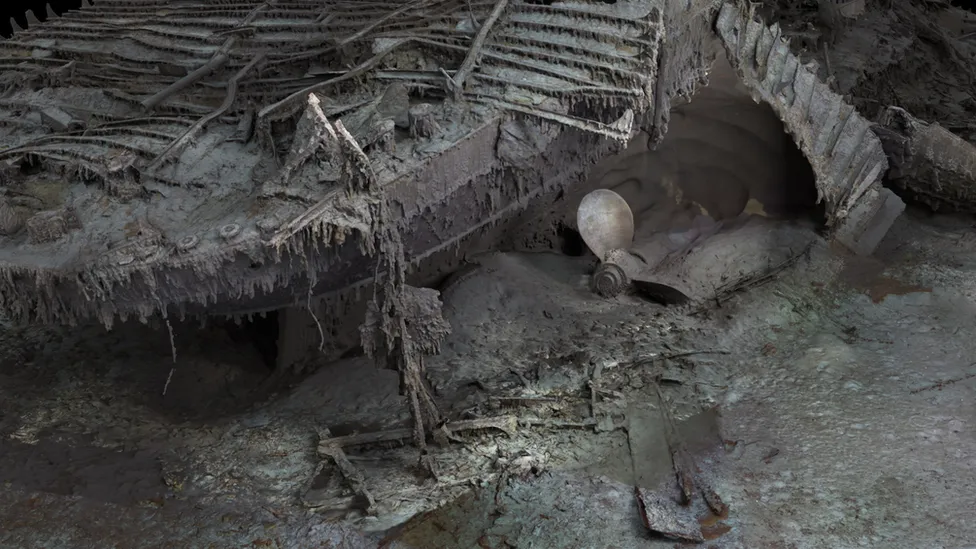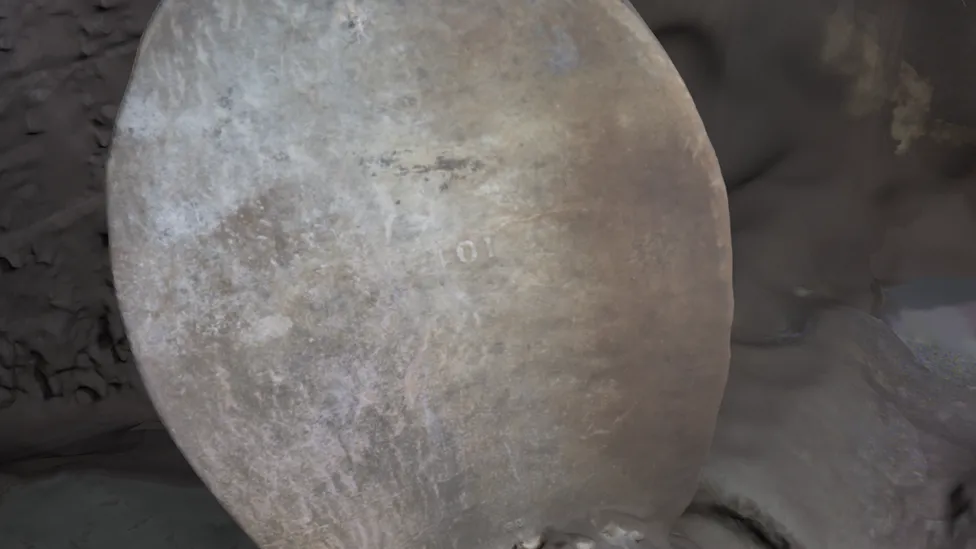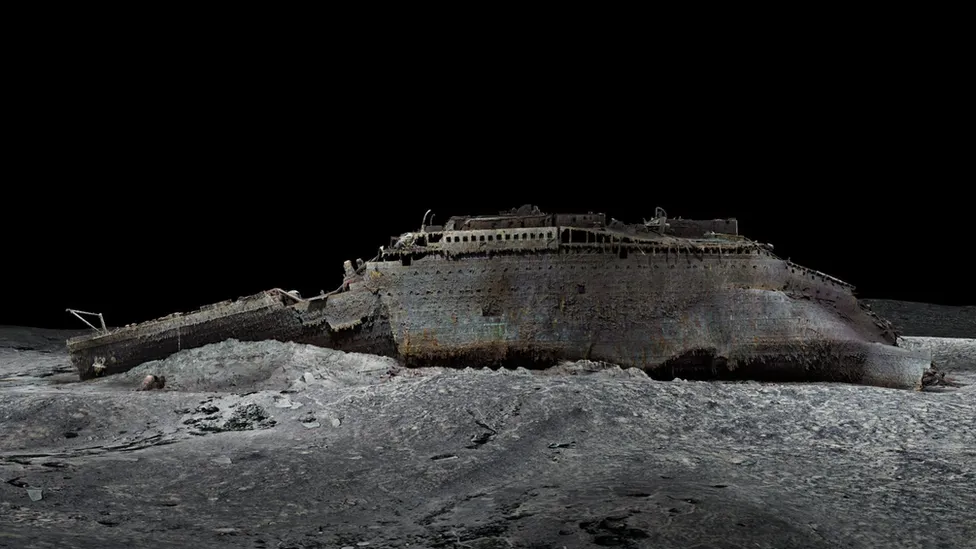The RMS Titanic, famously known as the "unsinkable" ship, met its tragic end on April 14, 1912, when it collided with an iceberg and sank into the depths of the north Atlantic, resting at a staggering depth of 12,500 feet. The disaster claimed the lives of over 1,500 individuals, accounting for approximately 70% of the passengers and crew on board.
While survivor testimonies from that ill-fated night provided valuable insights into the sequence of events, lingering questions remain regarding the precise details surrounding the sinking. Titanic analyst Parks Stephenson aims to shed light on these mysteries with the help of a groundbreaking 3D digital scan of the ship.
In an interview with the BBC, Mr. Stephenson expressed his belief that the digital model represents a significant leap forward in advancing the Titanic's historical research based on concrete evidence rather than mere speculation. The meticulously crafted model serves as a crucial tool in unraveling the truth behind the tragic event, filling in gaps in our understanding of the disaster.
The 3D digital scan of the Titanic enables researchers to explore the ship's intricate details and structural components with unprecedented accuracy and clarity. By analyzing the virtual representation of the ship, experts can delve into various aspects of the vessel's design, construction, and ultimately its demise. This technological advancement provides a unique opportunity to reassess existing theories, challenge assumptions, and potentially reveal new insights into the Titanic's sinking.
The digital model allows researchers to virtually navigate through the ship's interior and exterior, giving them a comprehensive understanding of the vessel's layout and conditions at the time of the accident. This detailed visualization facilitates investigations into crucial factors such as the iceberg impact points, structural vulnerabilities, and potential contributing factors that led to the devastating loss of life.
Parks Stephenson's pursuit of evidence-based research aims to dispel myths and misconceptions that have surrounded the Titanic for over a century. Through the meticulous analysis of the digital scan, he hopes to uncover fresh perspectives and promote a more accurate understanding of the events that transpired on that fateful night.
The 3D digital scan of the Titanic represents a significant milestone in the ongoing exploration of one of history's most tragic disasters. As researchers delve into the intricacies of the ship's design and unravel the secrets held by its sunken remains, they inch closer to a more comprehensive and evidence-based account of the Titanic's final voyage. This remarkable technological advancement ensures that the memory of those lost aboard the Titanic will be remembered and honored through the pursuit of truth and a deeper understanding of the tragedy that unfolded on that fateful night.
Over the years, several expeditions have ventured to the depths of the ocean to explore the wreckage of the RMS Titanic. However, due to the dark and murky conditions at the ocean floor, limited visibility has hindered comprehensive observations of the ship. A significant breakthrough occurred last summer when Magellan Ltd, a pioneering deep-sea mapping company, joined forces with Atlantic Productions, known for their documentary work. Their collaboration aimed to create a remarkable 3D reconstruction of the Titanic.
This groundbreaking project employed cutting-edge technology and expertise to bring the sunken ship back to life in an unprecedented manner. By meticulously scanning and mapping the wreckage using advanced imaging techniques, the team successfully pieced together a highly detailed and immersive 3D reconstruction of the Titanic. The collaboration between Magellan Ltd and Atlantic Productions has unlocked a new level of understanding and engagement with the Titanic's history. The 3D reconstruction allows viewers to virtually explore and navigate through the various sections of the ship, providing a more comprehensive and vivid experience than ever before.
This technological marvel has the potential to unveil hidden details, shed light on the ship's condition, and offer valuable insights into the events that transpired during its ill-fated voyage. The 3D reconstruction serves as a powerful tool for researchers, historians, and enthusiasts to delve deeper into the story of the Titanic and gain a more profound appreciation for the scale and tragedy of the disaster. Additionally, the collaboration between Magellan Ltd and Atlantic Productions has further fueled the creation of a documentary that aims to capture the entire journey of this extraordinary project. The documentary will not only showcase the remarkable 3D reconstruction but also provide a behind-the-scenes look at the painstaking efforts and cutting-edge technology involved in bringing the Titanic's story to life in such a compelling manner.
The remarkable 3D reconstruction of the Titanic stands as a testament to human ingenuity and the relentless pursuit of knowledge. By leveraging advanced imaging techniques and the expertise of Magellan Ltd and Atlantic Productions, the project has achieved an awe-inspiring level of detail and accuracy, enabling us to explore the sunken ship in ways previously unimaginable.
As the documentary takes shape, audiences around the world eagerly anticipate the opportunity to witness the Titanic's haunting beauty and immerse themselves in its tragic history. The 3D reconstruction serves as a remarkable testament to the enduring fascination and significance of the Titanic's legacy, ensuring that its story continues to captivate and educate audiences for generations to come.
The team dedicated over 200 hours to meticulously survey and document the Titanic wreck using submersibles. Their mission involved capturing hundreds of thousands of images, which were then painstakingly assembled to create a comprehensive visual record. The depth at which the Titanic rests, approximately 4,000 meters below the surface, presented a formidable challenge for the team. Navigating such depths required specialized equipment and expertise to ensure the safety and success of the project. Additionally, the presence of strong currents in the area added another layer of complexity to the task at hand.
One crucial aspect of the project was to approach the wreckage with the utmost care and respect. As custodians of this historic site, the team strictly adhered to preservation guidelines, ensuring that no physical contact was made with the wreck. This approach aimed to protect the delicate remains and prevent any potential damage that could compromise the integrity of the site. Gerhard Seiffert, a representative from Magellan, emphasized the challenges posed by the depth of the wreck and the need for caution during the exploration. The team's commitment to non-intrusive methods highlights their dedication to preserving the historical significance of the Titanic.
By meticulously surveying the wreck and capturing extensive visual data, the team has made significant strides in advancing our understanding of this iconic maritime disaster. Their meticulous efforts will not only contribute to ongoing research but also serve as a lasting testament to the technological achievements and preservation ethics demonstrated during the exploration of the Titanic.
In addition to the depth and preservation concerns, another significant challenge faced by the team was the meticulous mapping of every square centimeter of the Titanic wreckage. This task included capturing even the seemingly uninteresting parts, such as mud and debris fields. The comprehensive mapping process demanded attention to detail and an unwavering commitment to documenting every aspect of the wreck. While the more visually striking objects may naturally draw attention, the team recognized the importance of including every minute detail to create a complete and accurate representation.
Mapping the mud and debris fields was essential for filling in the gaps between the more prominent and intriguing objects found within the wreck. By meticulously documenting these seemingly less remarkable areas, the team ensured a comprehensive understanding of the entire site. The inclusion of these seemingly mundane elements not only enhances the accuracy of the 3D reconstruction but also adds to the overall authenticity of the virtual experience. It allows viewers to immerse themselves fully in the environment, gaining a comprehensive and realistic sense of the Titanic wreckage as it lies on the ocean floor.
By meticulously mapping every square centimeter, the team demonstrates their commitment to providing a faithful and detailed representation of the Titanic's final resting place. This meticulous approach ensures that no aspect of the wreck is overlooked and contributes to the ongoing research and preservation efforts surrounding this historic site.

